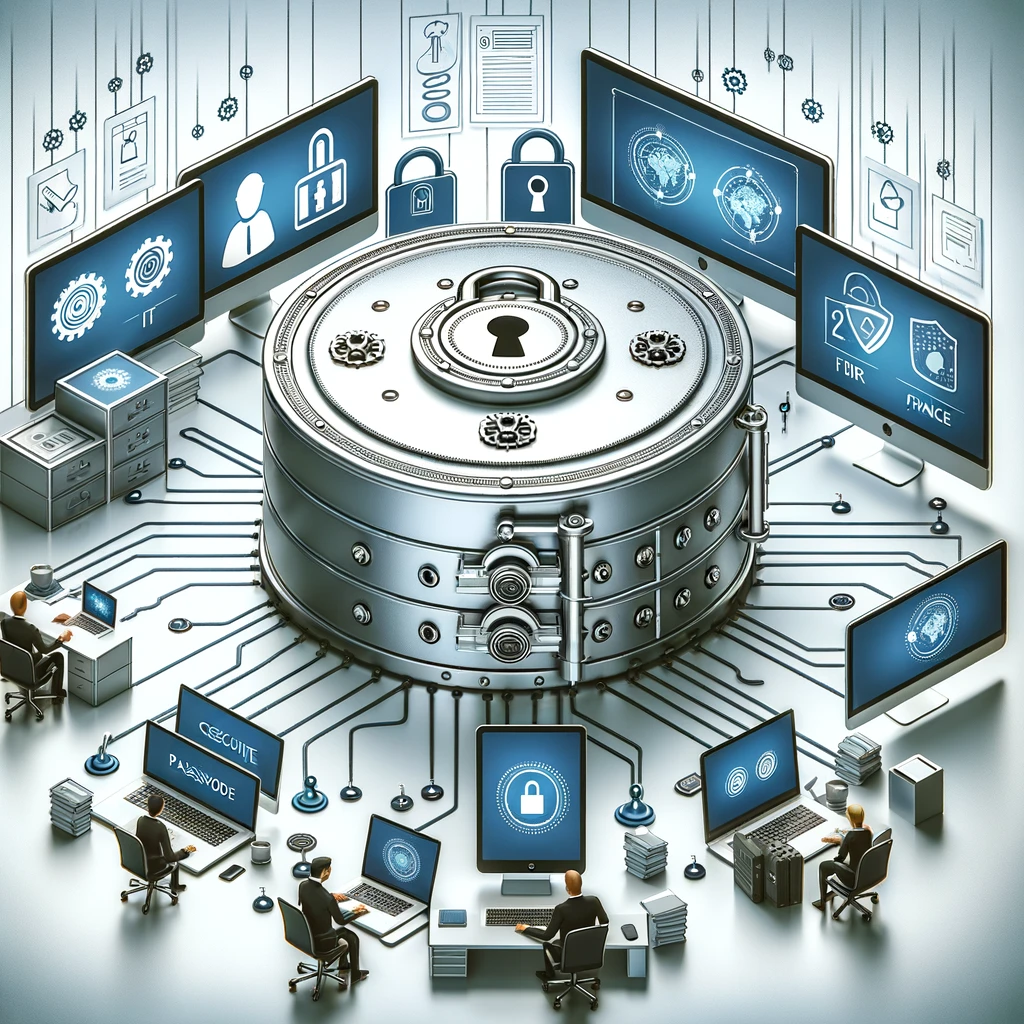Enterprise Password Management refers to the strategies and solutions designed to help organizations securely store, manage, and facilitate the use of credentials for various systems and applications across the enterprise. This approach addresses the unique challenges businesses face in managing a large volume of passwords, ensuring that they are both secure and accessible to authorized users.
Key Features of Enterprise Password Management Solutions
- Centralized Password Repository: These solutions provide a secure, encrypted database where all enterprise passwords and credentials can be stored. This centralization simplifies management and access control.
- Access Control: They offer granular access controls, allowing administrators to define who can access specific credentials based on roles, departments, or individual requirements.
- Password Policies and Complexity Requirements: To ensure strong security practices, these systems enforce password policies, such as minimum length, complexity requirements, and expiration periods.
- Automated Password Rotation: Many solutions automate the process of changing passwords at regular intervals, reducing the risk associated with static passwords.
- Single Sign-On (SSO): SSO capabilities allow users to access multiple applications or systems with a single set of credentials, improving user convenience while maintaining security.
- Multi-Factor Authentication (MFA): Integration with MFA adds an additional layer of security, ensuring that access to the password management system itself is tightly controlled.
- Audit Trails and Reporting: These solutions provide detailed logs and reports of all password-related activities, including access history and changes, which is crucial for compliance and security monitoring.
Benefits of Enterprise Password Management
- Enhanced Security: By enforcing strong password policies and secure storage, these solutions significantly reduce the risk of password-related breaches.
- Operational Efficiency: Centralized management and automation features streamline the process of managing credentials, saving time and reducing the likelihood of errors.
- Regulatory Compliance: Many solutions help organizations comply with regulatory requirements by providing secure storage, controlled access, and detailed audit trails for sensitive credentials.
- Reduced Password Fatigue: With features like SSO, users no longer need to remember multiple complex passwords, reducing the risk of insecure practices like password reuse.
- Improved Incident Response: Detailed audit trails allow organizations to quickly identify and respond to suspicious activities, potentially mitigating security incidents.
Implementation Considerations
- User Training and Adoption: Ensuring that employees understand how to use the password management system and the importance of adherence to security policies is crucial for success.
- Integration with Existing Systems: The chosen solution should seamlessly integrate with the organization’s existing IT infrastructure, including directories, applications, and security tools.
- Scalability: The solution must be capable of scaling to accommodate growth in users, applications, and complexity of the organizational structure.
Challenges
- User Resistance: Users accustomed to managing their passwords may resist adopting a new system, especially if it’s perceived as cumbersome or restrictive.
- Complex Integration Scenarios: Integrating password management solutions with a wide array of existing systems and applications can be challenging.
- Balancing Security and Usability: Finding the right balance between stringent security measures and user convenience is often a challenge but is crucial for the effective use of the system.
Enterprise Password Management is an essential component of a comprehensive cybersecurity strategy for organizations, helping to mitigate the risks associated with password management while enhancing operational efficiency and compliance.
You

